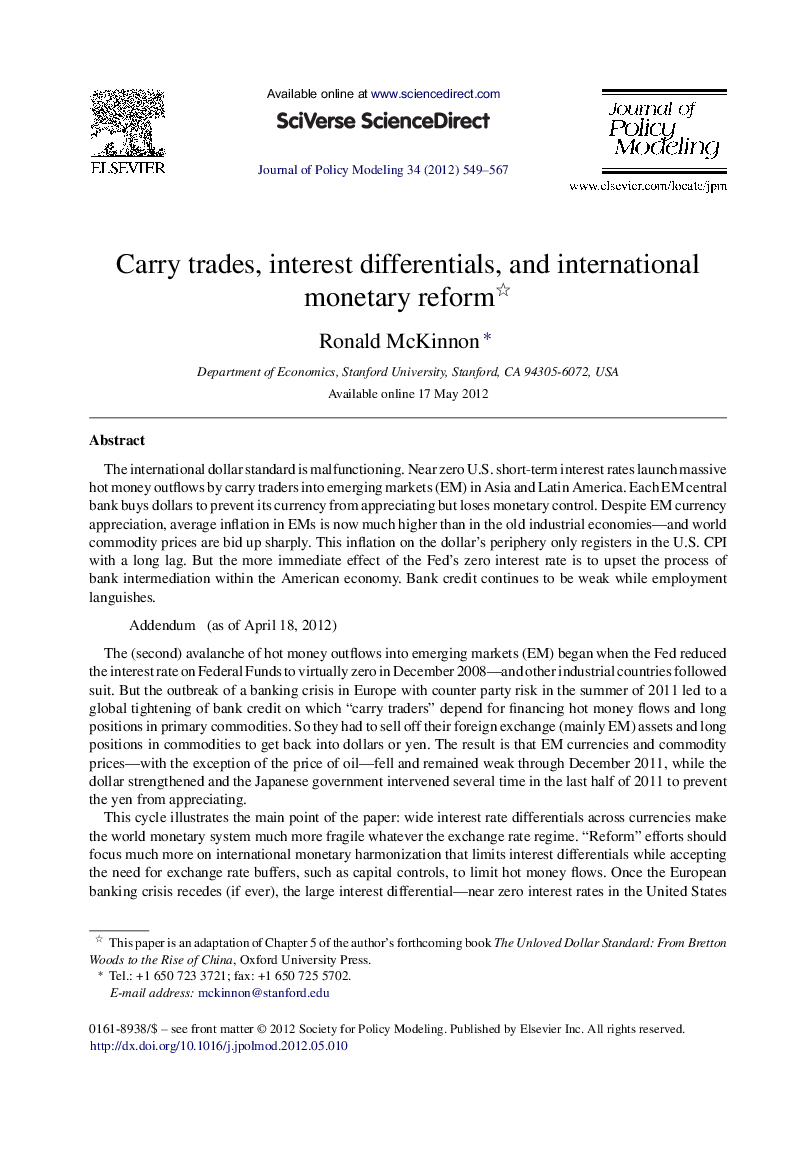| کد مقاله | کد نشریه | سال انتشار | مقاله انگلیسی | نسخه تمام متن |
|---|---|---|---|---|
| 968635 | 931639 | 2012 | 19 صفحه PDF | دانلود رایگان |

The international dollar standard is malfunctioning. Near zero U.S. short-term interest rates launch massive hot money outflows by carry traders into emerging markets (EM) in Asia and Latin America. Each EM central bank buys dollars to prevent its currency from appreciating but loses monetary control. Despite EM currency appreciation, average inflation in EMs is now much higher than in the old industrial economies—and world commodity prices are bid up sharply. This inflation on the dollar's periphery only registers in the U.S. CPI with a long lag. But the more immediate effect of the Fed's zero interest rate is to upset the process of bank intermediation within the American economy. Bank credit continues to be weak while employment languishes.Addendum (as of April 18, 2012)Addendum (as of April 18, 2012)The (second) avalanche of hot money outflows into emerging markets (EM) began when the Fed reduced the interest rate on Federal Funds to virtually zero in December 2008—and other industrial countries followed suit. But the outbreak of a banking crisis in Europe with counter party risk in the summer of 2011 led to a global tightening of bank credit on which “carry traders” depend for financing hot money flows and long positions in primary commodities. So they had to sell off their foreign exchange (mainly EM) assets and long positions in commodities to get back into dollars or yen. The result is that EM currencies and commodity prices—with the exception of the price of oil—fell and remained weak through December 2011, while the dollar strengthened and the Japanese government intervened several time in the last half of 2011 to prevent the yen from appreciating.This cycle illustrates the main point of the paper: wide interest rate differentials across currencies make the world monetary system much more fragile whatever the exchange rate regime. “Reform” efforts should focus much more on international monetary harmonization that limits interest differentials while accepting the need for exchange rate buffers, such as capital controls, to limit hot money flows. Once the European banking crisis recedes (if ever), the large interest differential—near zero interest rates in the United States and much higher natural interest rates in the high growth EMs—will, in 2012, set off another cycle of hot money flows from the center to the periphery with rising commodity prices.
Journal: Journal of Policy Modeling - Volume 34, Issue 4, July–August 2012, Pages 549–567